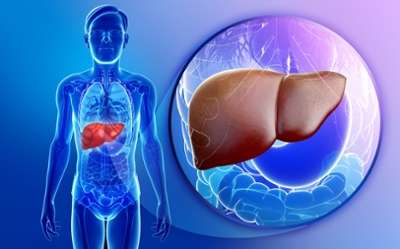Title: Understanding Liver Disease: Signs, Symptoms, Causes, Risk Factors, Diagnosis, Prevention, Diet, Lifestyle, and Homoeopathic Medicine
Introduction:
Liver disease refers to a range of conditions that affect the liver's structure and function. It is essential to be aware of the signs, symptoms, causes, risk factors, diagnosis methods, prevention strategies, diet and lifestyle considerations, and the potential role of homoeopathic medicine in managing liver disease. In this blog post, we will explore the key aspects of liver disease and its holistic approach to treatment.
Signs and Symptoms of Liver Disease:
1. Jaundice: Yellowing of the skin and eyes.
2. Fatigue and weakness: Feeling tired and lacking energy.
3. Abdominal pain and swelling: Discomfort and bloating in the abdominal region.
4. Nausea, vomiting, and loss of appetite: Digestive disturbances and decreased desire to eat.
5. Dark urine and pale stools: Changes in urine color and pale-colored stools.
6. Easy bruising and bleeding: Increased tendency to bruise and prolonged bleeding.
Common Causes of Liver Disease:
1. Viral infections: Hepatitis viruses, such as hepatitis A, B, and C.
2. Alcohol abuse: Excessive and prolonged alcohol consumption can damage the liver.
3. Non-alcoholic fatty liver disease (NAFLD): Accumulation of fat in the liver, often associated with obesity and metabolic syndrome.
4. Autoimmune diseases: Conditions where the immune system mistakenly attacks the liver, such as autoimmune hepatitis.
5. Medications and toxins: Certain medications, herbal supplements, and exposure to toxins can cause liver damage.
Risk Factors for Liver Disease:
1. Excessive alcohol consumption: Heavy and prolonged drinking significantly increases the risk.
2. Obesity and unhealthy lifestyle: Poor diet, sedentary lifestyle, and obesity contribute to fatty liver disease.
3. Viral infections: Being exposed to or having a history of viral hepatitis increases the risk.
4. Family history: Having a family member with liver disease may increase the susceptibility.
5. Diabetes and metabolic syndrome: These conditions are associated with an increased risk of liver disease.
Diagnosis of Liver Disease:
1. Blood tests: Measure liver enzymes, assess liver function, and detect markers of viral hepatitis.
2. Imaging tests: Ultrasound, CT scan, or MRI can help visualize the liver and identify abnormalities.
3. Liver biopsy: A small sample of liver tissue is taken and analyzed for diagnosis and staging.
Prevention, Diet, and Lifestyle Considerations:
1. Limit alcohol consumption: Moderation or abstinence from alcohol is crucial for preventing alcohol-related liver disease.
2. Practice safe sex and hygiene: Take precautions to prevent the transmission of hepatitis viruses.
3. Maintain a healthy weight: Adopt a balanced diet, exercise regularly, and manage weight to prevent fatty liver disease.
4. Vaccination: Get vaccinated against hepatitis A and B viruses.
5. Avoid exposure to toxins: Use protective measures when handling chemicals and medications.
Diet and Lifestyle for Liver Health:
1. Consume a balanced diet: Emphasize fruits, vegetables, whole grains, lean proteins, and healthy fats.
2. Limit processed and fried foods: Reduce intake of processed foods high in saturated fats and limit fried foods.
3. Stay hydrated: Drink plenty of water to support liver function and flush out toxins.
4. Exercise regularly: Engage in physical activity to maintain a healthy weight and improve liver health.
5. Manage stress: Practice stress management techniques, such as meditation or yoga, to support liver health.
Homoeopathic Medicine for Liver Disease:
Homoeopathic treatment for liver disease aims to support liver function, reduce inflammation, and promote overall well-being. Some commonly used homoeopathic remedies for liver disease include:
1. Carduus marianus: Indicated for liver cirrhosis and hepatitis, especially when accompanied by abdominal fullness and tenderness.
2. Chelidonium majus: Useful for liver enlargement, jaundice, and digestive disturbances.
3. Nux vomica: Recommended for liver diseases associated with overindulgence in alcohol, fatty foods, or sedentary lifestyle.
It is crucial to consult a qualified homoeopathic practitioner for an accurate diagnosis and individualized treatment plan based on your specific symptoms and overall health.
Conclusion:
Liver disease is a serious condition that requires attention and management. By understanding the signs, symptoms, causes, risk factors, diagnosis methods, prevention strategies, and considering homoeopathic medicine as a complementary approach, individuals can support their liver health and overall well-being. Remember to consult healthcare professionals for an accurate diagnosis and to create a comprehensive treatment plan tailored to your specific needs.

Leave a Message